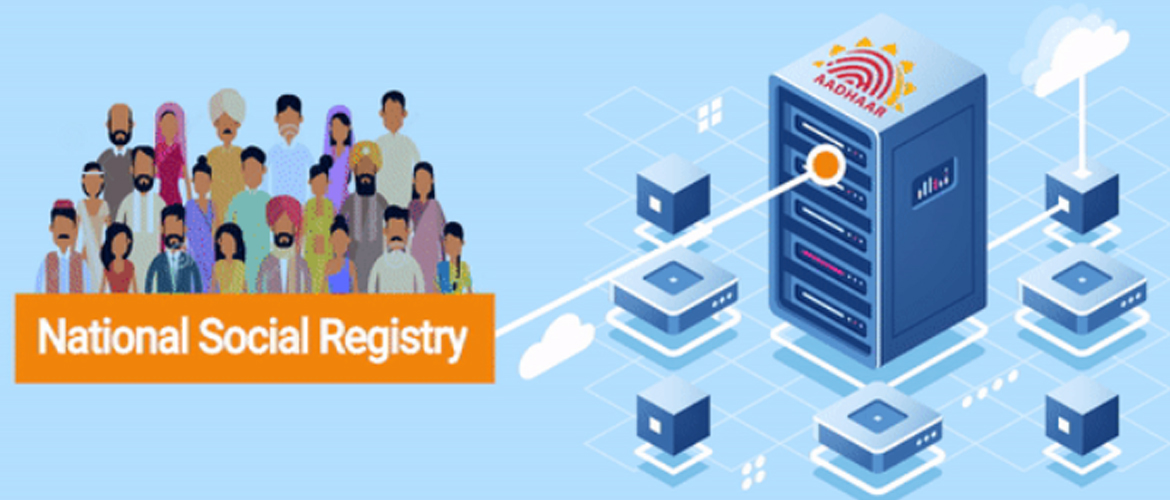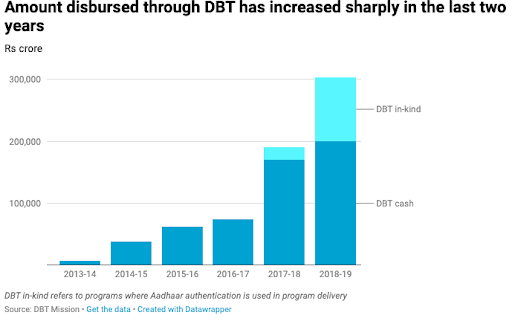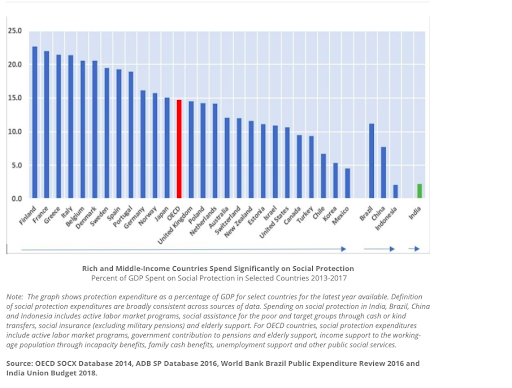Easing the burden: National Social Registry
March 28, 2020 | Expert Insights

Social registries enabling social protection
India has signed on to achieve the UN Sustainable Development Goals calling for "nationally appropriate social protection floors and systems." The state has the responsibility to take care of the poorest of the poor. In times like now, when the poor are bereft of a social and income security cover, the state has to step forward and meet its commitments.
The World Bank has defined Social Registries as information systems that support outreach, intake registration and determination of potential eligibility for one or more social programs. Beneficiary registries are databases that track the information of beneficiaries who are part of specific programs only.
Responding to the Right to Information Act (RTI) queries, the Government has informed that it is working on developing a National Social Registry or Social Registry Information System. This will be a single, searchable Aadhar-seeded database or "multiple harmonised and integrated databases" that use Aadhaar numbers to integrate religion, caste, income, property, education, marital status, employment, disability and family tree data of every single citizen. The RTI reply states that the database will include details of all citizens and not only those below the poverty line (BPL)
An expert committee has been set up to implement the social registry by 2021. The committee has proposed amendments to the Aadhar act, to allow the Government to collect data. In 2018, the Secretary of the Unique Identification Authority of India (UIDAI) asked the court to explore the possibility of Aadhar being used as the single entity identifier across multiple social welfare programmes.

Amending Aadhar Regulations to create the database
The Socio-Economic Caste Census (SECC) in 2011, allowed the Government to collect new census data on asset and socio-demographic information. This data if used judiciously, can make the beneficiary identification process more transparent.
Certain amendments are required to the two regulations governing UIDAI- the Aadhar Authentication Regulation 2016 and the Aadhar Sharing of Information Regulation 201, in order to enable the use of UID database for social registry. Regulation 17 (d) is related to the consent of Aadhar number holders for using information received during authentication for a particular purpose. Regulation 18(4) is about requesting entity sharing authentication logs. Regulation 4 of the Sharing of information regulations 2016, is related to the storage of biometric information and sharing of identity information to requesting authority.
In the years from 1997 to 2017, India's per capita national income increased more than four-fold and, therefore, the government could allocate a larger share towards its poverty alleviation schemes. India spends about ₹1.6 trillion on welfare activities. There are 30 centrally sponsored umbrella schemes with approximately 700 sub-schemes that have both central and state participation. Bank accounts seeded with Aadhar under the Jan Dhan Yojana are being used for direct benefit transfers (DBT).
In the 2020-2021 budget, substantial allocations are earmarked to some of the flagship schemes; the Mahatma Gandhi National Rural Employment Guarantee Programme ₹60, 000 crores, Mid-day meals in schools ₹11,000 crores and the recently launched Ayushman Bharat Scheme, the centres most ambitious health insurance scheme ₹ 69, 233 crores.
The successes of social security

While good intentions abound, the devil lies in details and the implementation of the various schemes.
International experience has shown how robust social protection systems can support growth processes. Most countries like France, Canada, Germany, and Brazil have increased their expenditure on social protection as they grow.
The American social security system is extensive, covering over 63 million people with a budget of approximately $900 billion (2017 data). It provides universal coverage and promotes equality. The allocation is benchmarked for inflation and changes in the cost of living. To help the poor suffering from the COVID-19 lockdown, the U.S. government plans to transfer to every family earning below $75,000 per annum, using the Social Security networks, $1200 per adult and $ 500 per child.
The social security databases are consolidated and have varying levels of access, maintaining transparency as well as privacy. Social security is categorised under mandatory spending of the federal budget, and it comprises more than a third of social spending.
The Netherlands, home to the world's best social security policy, also allows foreigners to pay into the Dutch Social security system under different schemes. They have various databases such as the Personal Records Database which contains personal data of the people who live in the Netherlands, the non-residents and temporary residents like students as well. The data is protected under the European Union's GDPR.
Assessment
The myriad of welfare schemes operational in India have varying processes and eligibility criteria which need to be streamlined with a common database. The proposed National Social registry can plug corruption and leakages and prevent duplication or fraud. Today the Government is at odds how to identify the millions who have been rendered destitute by the pandemic and need urgent state benevolence.
While a technology-driven welfare supply chain greatly empowers the state administration, access to vulnerable data should be strictly controlled. The debate on privacy versus public good is bound to come up in this process as India still does not have a data protection law
An integrated social registry will minimise complicated steps such as application and registration, and can generate efficiencies and cost-saving measures. Data validation via Aadhar can reduce oversight and controls, and boost the quality and accuracy of welfare services.








Comments